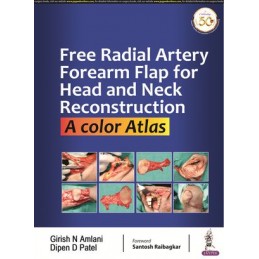- Reduced price

Order to parcel locker

easy pay


 Delivery policy
Delivery policy
Choose Paczkomat Inpost, Orlen Paczka, DHL, DPD or Poczta Polska. Click for more details
 Security policy
Security policy
Pay with a quick bank transfer, payment card or cash on delivery. Click for more details
 Return policy
Return policy
If you are a consumer, you can return the goods within 14 days. Click for more details
A radial forearm free flap is one way of filling a hole which is left when a cancer has been removed. It is one of the most common ways of replacing tissue in the head and neck, particularly after mouth cancers have been removed. It can be used to replace large parts of the mouth and has the advantage that when it heals it does not shrink so that hopefully speech and swallowing will not be greatly affected.
For the procedure, a surgeon takes a piece of skin from the inside surface of the patients forearm near the wrist. The skin and fat layer in this region are removed (the flap) along with two blood vessels, one of which supplies blood to the flap (the artery) and one of which drains blood from it (the vein). The vessel which supplies blood to the flap is the artery which gives rise to the pulse at the wrist at the base of the thumb. Once the flap of skin is raised it is transferred to the head and neck and sewn into the hole created by the removal of the cancer. The blood vessels supplying and draining the flap are then joined to blood vessels in the neck under a microscope. These blood vessels then keep the flap alive while it heals into its new place.
Once the flap is removed from the forearm the hole created is covered with a graft of skin. This graft of skin can be taken from one of several places. Commonly a thin piece of skin is shaved from the arm above the elbow. Alternatively, some skin will be borrowed from the stomach.
This highly illustrated colour atlas is a comprehensive guide to head and neck reconstruction using free radial artery forearm flap.
Beginning with an introduction to the history of the technique and its advantages and disadvantages, the book then provides step by step guidance on surgical anatomy, pre- and post-operative care, surgical procedures, and potential complications. A selection of case studies is included to assist learning.
Key points
Data sheet
